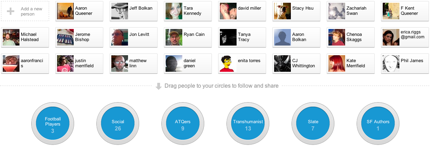Digital Learning | News
Arizona State Launches Learning Platform for Search for Intelligent Life
- By Dian Schaffhauser
- 04/22/14
A course for non-science majors that explores the search for life on other planets developed by educators at Arizona State University is going into production for use by other institutions and may be offered in MOOC form for individuals in the future. HabWorlds Beyond is based on the institution's Habitable Worlds course. The courses use game-like simulations, virtual field trips with video and adaptive technology to help students understand the Drake equation, a mathematical formula that provides a framework for quantifying the potential for life elsewhere in the Milky Way galaxy.
Arizona State's Ariel Anbar and Lev Horodyskyj introduced the course in 2011 as part of the university's School of Earth and Space Exploration program. Students create and destroy stars, hunt for planets, search for signs of life and travel around the world and through time to explore the evolution of Earth's habitability. So far, 1,500 students have taken the course at Arizona State. Beginning in fall 2014 instructors from other schools will be able to use HabWorlds Beyond.
| |

The Drake equation is a mathematical formula that provides a framework for quantifying the potential for life elsewhere in the Milky Way galaxy |
|
Smart Sparrow, an adaptive digital learning platform used to develop and manage the course, includes an authoring tool for creating interactive content, including simulations; an "adaptivity" panel that allows learning pathways to be customized for each student; and a workflow environment for communicating with others who are helping to develop the curriculum too.
"With all the problems facing our planet, we want people to understand the power and limitations of science," said Anbar. "Large lecture courses can describe scientific results but they can't teach how science really works. We wanted to create a new way of teaching science to people who aren't necessarily science majors, so that they can be smarter voters and decision-makers about the future of our planet."
Each lesson in the program explores the variables used in the Drake equation:
- N, the number of civilizations in our galaxy;
- R, the birth rate of news stars;
- fp, the percentage of those stars with planets;
- ne, the number of those planets with earth-like qualities capable of supporting life;
- fl, the percentage of those planets that could support life;
- fi, the percentage of those planets where intelligent life could develop;
- fc, the percentage of civilizations capable of developing technology to communicate their existence to the rest of the galaxy; and
- L, the length of time those civilizations last.
"This collaboration with ASU has resulted in a one-of-a-kind learning experience that gives students the opportunity to learn science in a whole new way," said Dror Ben-Naim, CEO of Smart Sparrow. "HabWorlds Beyond will bring world class science education to classrooms around the world. Teachers will be able to use our platform to adapt the material specifically to the needs of their own classroom."
About the Author
Dian Schaffhauser is a former senior contributing editor for 1105 Media's education publications THE Journal, Campus Technology and Spaces4Learning.

